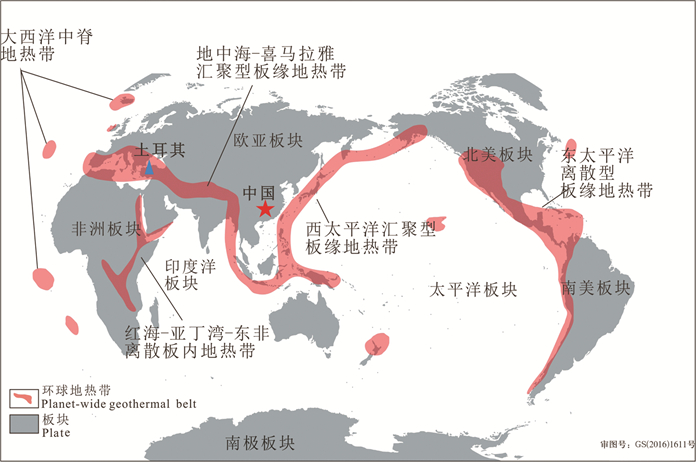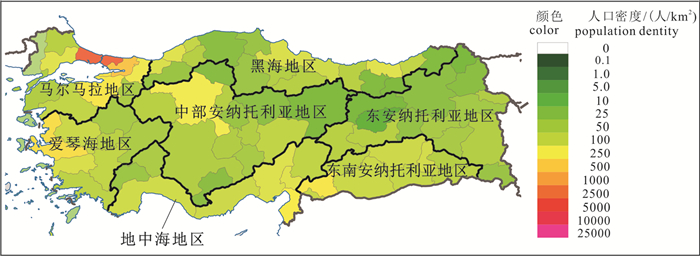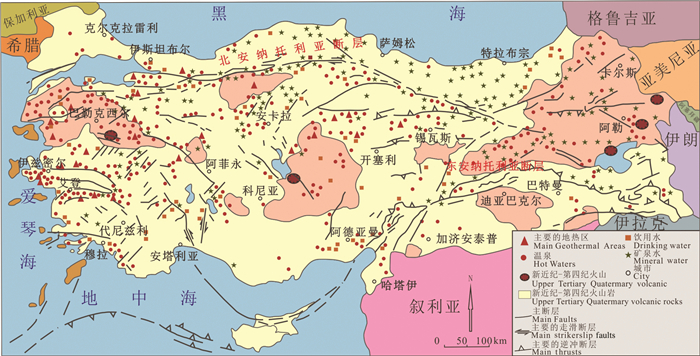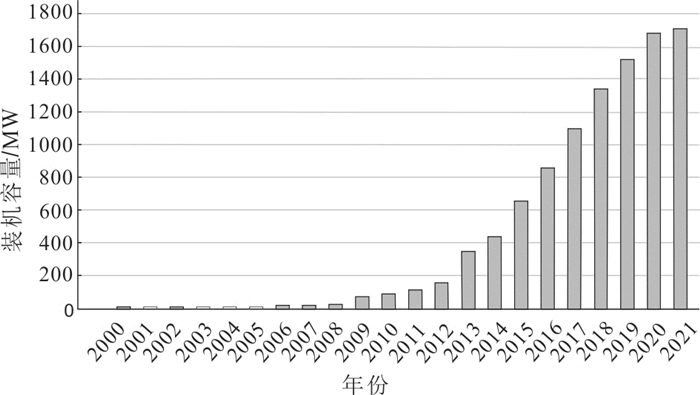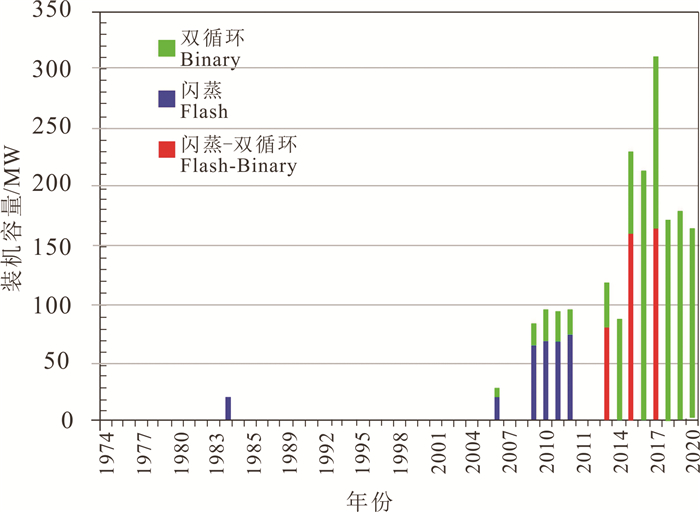Development of geothermal energy industry in Türkiye and its enlightenment to China
-
摘要:研究目的
地热能作为一种清洁高效的可再生能源,在能源紧缺与气候变化的双重驱动下,正逐渐受到各国重视。开发地热资源,成为加快能源结构调整以及“双碳”目标实现的重要途径。近年来,土耳其地热能产业高速发展,截至2021年,地热发电总装机容量约为中国的30多倍,地热能直接利用则由2005年的1177 MW增加到2022年的4000 MW,取得了举世瞩目的成绩。土耳其与中国共处于地中海—喜马拉雅地热带上,地热资源丰富,土耳其地热能产业发展对于中国具有重要借鉴意义。
研究方法本文采用文献综述的方法,分析土耳其地热资源条件,研究地热能产业发展现状,总结其快速发展的原因。结合中国地热资源条件与发展现状,借鉴土耳其经验,剖析影响中国地热发展的主要问题,提出对策与建议。
研究结果研究表明,21世纪以来,土耳其政府大力支持地热能产业发展,其快速发展的原因和主要经验有:(1)政府承担前期勘探工作,有效降低企业开发风险;(2)政策引导、立法补贴,有效提高开发企业积极性,降低投资成本;(3)融资支持,为地热能发展提供资金保障;(4)国际合作、技术引领,有力促进地热能高效开发利用。
结论借鉴土耳其地热能产业快速发展经验,结合中国实际,提出以下建议:(1)立法先行,完善管理机制,明确地热开发利用规程;(2)政策激励、补贴支持,充分调动企业积极性;(3)科学布局,实现地热产业高效发展;(4)加强国际交流,助力技术进步;(5)增强公众意识,提高地热能认知度。
创新点:(1)分析土耳其地热资源条件,研究地热能产业发展现状,总结其快速发展的原因。(2)总结中国地热资源条件与发展现状,剖析影响中国地热发展的主要问题,提出对策与建议。
Abstract:This paper is the result of geothermal geological survey engineering.
ObjectiveGeothermal energy, as a kind of clean and efficient renewable energy, is gradually attracting the attention of all countries under the dual drive of energy shortage and climate change. The development of geothermal resources has become an important way to accelerate the adjustment of energy structure and achieve the goal of "double carbon". In recent years, Türkiye's geothermal energy industry has developed at a high speed. By 2021, the total installed capacity of geothermal power generation will be about 30 times that of China, and the direct utilization of geothermal energy will increase from 1177 MW in 2005 to 4000 MW in 2022, making these remarkable achievements. Türkiye and China are both located in the Mediterranean Himalayan geotropics, where geothermal resources are abundant. The development of Türkiye's geothermal energy industry is of great significance to China.
MethodThis paper uses the method of literature review to analyze the conditions of geothermal resources in Türkiye, study the development status of geothermal energy industry, and summarize the reasons for its rapid development. Combined with the conditions and development status of China's geothermal resources, and drawing on Türkiye's experience, this paper analyzes the main problems affecting China's geothermal development, and puts forward countermeasures and suggestions.
ResultsThe research shows that Türkiye's government has vigorously supported the development of geothermal energy industry since the 21st century. The reasons and main experiences of its rapid development include: (1) The government undertakes the preliminary exploration work, effectively reducing the development risk of enterprises; (2) Policy guidance and legislative subsidies can effectively improve the enthusiasm of development enterprises and reduce investment costs; (3) Financing support to provide financial guarantee for geothermal energy development; (4) International cooperation and technology guidance will effectively promote the efficient development and utilization of geothermal energy.
ConclusionDrawing on the rapid development experience of Türkiye's geothermal energy industry and combining with China's actural conditions, the following suggestions are put forward: (1) Improve geothermal energy management mechanism and define the process of geothermal development and utilization; (2) Effectively improve the enthusiasm of enterprises development and reduce investment costs through policy guidance and subsidies; (3) Realize efficient development of geothermal industry through reasonable spatial planning; (4) Strengthen international exchanges and help technological progress; (5) Improve social awareness of geothermal energy.
-
1. 研究目的(Objective)
湘中坳陷作为南方复杂构造区页岩气勘探的热点地区之一,也是中国油气勘探久攻未克的地区。前期在湘中地区北部的涟源凹陷泥盆系和石炭系获得了页岩气突破和发现,证实了湘中地区上古生界页岩气资源丰富。但对湘中地区南部的邵阳凹陷调查程度较为薄弱,针对邵阳凹陷二叠系仅开展了少量基础地质调查工作,页岩气资源潜力评价方面的工作尤为欠缺。本次研究依托邵阳湘邵地1井(XSD1井)钻探工程建立了邵阳凹陷二叠系地层层序序列,揭示了主要含气页岩层系的分布特征,获取了含气性评价参数,对湘中地区二叠系页岩气勘探开发和重新评价湘中坳陷页岩气资源潜力具有重要的现实意义。
2. 研究方法(Methods)
中国地质调查局武汉地质调查中心在收集分析区域地质相关资料的基础上,结合邵阳凹陷短陂桥向斜的煤田浅钻、非震物探等资料开展页岩气地质综合评价,采用页岩埋深500~4500 m,页岩有机碳含量≥1.0%,页岩厚度≥15 m,页岩有机质热演化程度1.0%~3.5%的评价参数在短陂桥向斜区优选页岩气远景区,论证部署了1口小口径页岩气地质调查井—XSD1井,湖南煤田地质勘查有限公司组织实施钻探(图 1a)。该井采样全井段取心钻井工艺,测井选取PSJ-2数字测井系统,录井采用SK-2000G气测录井,钻获二叠系大隆组156.05 m(暗色硅质页岩、钙质泥岩94.48 m),龙潭组349.95 m(暗色泥岩216.93 m,粉砂质泥岩36.9 m),对这两套层系共采集暗色泥岩样品33件,进行解析气含量测定分析,落实了含气性评价参数。
3. 结果(Results)
本次样品分析工作由武汉地质调查中心古生物与生命-环境协同演化重点实验室完成,采用YSQ-IIIA岩石解析气测定仪(燃烧法)对含气段岩心共计33件样品进行分析。该井钻获二叠系大隆组厚度156.05 m,为一套硅质岩、硅质页岩、炭质钙质泥岩地层。其中在井深842~930.2 m硅质页岩、钙质泥岩段,气测全烃值从1.06%上升至16.54%,甲烷值从1.01%上升至14.04%,13件大隆组硅质页岩现场解析总含气量为1.29~9.97 m3/t,平均4.85 m3/t。实现了湘中坳陷二叠系页岩气新发现,有效拓展了华南地区大隆组勘探范围。
钻获龙潭组厚度349.95 m,上段为一套细砂岩、粉砂岩夹泥岩潮坪相沉积地层,下段为一套炭质泥岩、粉砂质泥岩夹薄层细砂岩泻湖相沉积地层。在井深1013.4~1048 m泥岩与粉砂岩互层段气测全烃值最高可达19.87%,甲烷值最高为16.94%,7件泥岩与粉砂岩样品现场解析总含气量0.57~3.42 m3/t,平均1.78 m3/t;井深1088.10~1199.75 m泥岩夹泥质粉砂岩含气层111.6 m,气测全烃值最高可达28.2%,甲烷值最高为23.6%,13件泥岩、粉砂质泥岩样品现场解析总含气量0.90~4.55 m3/t,平均2.01 m3/t(图 1b),首次查明了湘中坳陷二叠系龙潭组非常规油气分布特点。
通过区域地质背景分析,并结合煤田区域地质资料,本研究认为滑脱断裂(F9)上下盘具有不同的页岩气聚集条件。滑脱断裂之上由一系列的同向逆断层形成的逆冲推覆体,地层变形强烈,且裂缝发育,导致页岩气保存条件变差。滑脱断裂下盘是页岩气主要富集区,地层平缓,不发育次级通天断裂,与下盘地层形成反向遮挡,易形成封闭,保存条件良好(图 1c)。
4. 结论(Conclusions)
(1)二叠系大隆组岩性以硅质岩、硅质页岩为主,夹少量灰岩。主要含气段存在于上段硅质页岩段,厚88.2 m,含气量平均为4.85 m3/t,含气性优越,资源潜力大。
(2)二叠系龙潭组上段以致密砂岩气为主,含气量平均为1.78 m3/t;下段以页岩气为主,泥岩厚达177.47 m,含气量平均为2.01 m3/t,具有泥岩厚度大,含气性好等特征。
(3)保存条件是页岩气富集关键,构造改造弱的封闭演化环境有利于页岩气保存,研究区滑脱断裂下盘是页岩气主要富集区,易形成封闭,保存条件良好。
(4)湘邵地1井在二叠系大隆组和龙潭组获得良好的页岩气显示,证实了湘中地区二叠系具有良好的页岩气资源潜力,对湘中地区页岩气资源潜力评价具有重要意义。
5. 基金项目(Fund support)
本文为中国地质调查局项目“中扬子地区油气页岩气调查评价”(DD20221659)资助的成果。
致谢: 感谢编辑部与论文审稿人在审阅编辑过程中对本文提出的宝贵意见与建议。 -
图 1 全球高温地热带分布(据何治亮等,2017)
Figure 1. Distribution of global high temperature geotropics (after He Zhiliang et al., 2017)
图 2 土耳其人口密度及区域划分(据Tuik,2022)
Figure 2. Population density and regional division of Türkiye(after Tuik, 2022)
图 3 土耳其断裂活动带以及地热资源分布(据Dagistan et al., 2010)
Figure 3. Distribution of geothermal resources and the active faults of Türkiye (after Dagistan et al., 2010)
图 4 土耳其国家地热发电装机容量(据Bertani, 2005, 2016; Richter, 2022)
Figure 4. Installed capacity of geothermal power generation in Türkiye (after Bertani, 2005, 2016; Richter, 2022)
图 5 按工厂类型每年增加的地热发电装机容量(Serpen and DiPippo, 2022)
Figure 5. Geothermal MW added each year by type of plant (Serpen and DiPippo, 2022)
表 1 2010—2019年土耳其用于地热能利用的钻井(包含热泵井)(据 Mertoglu et al., 2015;Mertoglu et al., 2020)
Table 1 Drilling for geothermal energy utilization in Türkiye (including heat pump wells)(after Mertoglu et al., 2015; Mertoglu et al., 2020)

表 2 土耳其地热开发利用投资情况(据 Mertoglu et al., 2015)
Table 2 Investment in geothermal development and utilization in Türkiye (after Mertoglu et al., 2015)

表 3 中国地热发电情况(据王贵玲和陆川,2022)
Table 3 Geothermal Power Generation in China (after Wang Guiling and Lu Chuan, 2022)

表 4 2010—2019年间中国与土耳其地热开发利用投资对比(据Mertoglu et al., 2020; Tian et al., 2020)
Table 4 Comparison of geothermal development and utilization investment between China and Türkiye from 2010 to 2019 (after Mertoglu et al., 2020; Tian et al., 2020)

-
AA. 2022. EBRD launches €500M financing facility to support green transition in Turkiye [EB/OL]. (2022-04-19) [2022-08-28]. https://www.aa.com.tr/en/economy/ebrd-launches-500m-financing-facility-to-support-green-transition-in-turkiye/2567173#.
Bertani R. 2005. World geothermal power generation in the period 2001-2005[J]. Geothermics, 34: 651-690. doi: 10.1016/j.geothermics.2005.09.005
Bertani R. 2016. Geothermal power generation in the world 2010-2014 update report[J]. Geothermics, 60: 31-43. doi: 10.1016/j.geothermics.2015.11.003
Bilgin O. 2018. The importance of geothermal energy resources in Turkey[J]. Open Access Library Journal, 5(2): 1-8.
Chen Moxiang, Wang Jiyang, Deng Xiao. 1994. Geothermal Resources in China——Formation Characteristics and Potential Assessment[M]. Beijing: Science Press, 1-38 (in Chinese).
Chen Qinqiang. 2021. Domestic geothermal resource reserves, development and utilization and technical status[N]. China Petroleum News, 4(in Chinese).
Dagistan H, Dogu N, Karadaglar M. 2010. Geothermal explorations and investigations by MTA in Turkey[C]//Poceedings World Geothermal Congress 2010. Bali, Indonesia, 2.
Difiglio C, Güray B E, Merdan E, Aliabadi D E. 2020. Turkey Energy Outlook 2020. International Centre for Energy and Climate[M]. Sabanci: Sabanci University Publications, 452.
Government of Turkey. 2007. Law on Geothermal Resources and Mineral Waters[OL]. Ankara: Government of Turkey. (2007-06-14) [2022-07-18]. http://www.lawsturkey.com/law/law-on-geothermal-resources-and-mineral-waters-5686.
He Zhiliang, Feng Jianyun, Zhang Ying, Li Pengwei. 2017. A tentative discussion on an evalution on system of geothermal unit ranking and classification in China[J]. Earth Science Frontier, 24(3): 168-179 (in Chinese with English abstract).
Huttrer G W. 2020. Geothermal power generation in the world 2015-2020 update report[C]//Proceedings World Geothermal Congress, 1.
Jiang Guangzheng, Gao Peng, Rao Song, Zhang Linyou, Tang Xiaoyin, Huang Fang, Zhao Ping, Pang Zhonghe, He Lijuan, Hu Shengbiao, Wang Jiyang. 2016. Compilation of heat flow data in the continental area of China (4th edition) [J]. Chinese Journal of Geophysics, 59(8): 2892-2910 (in Chinese with English abstract).
Kaya T, Kindap A, Energy Z. 2009. Kizildere-new geothermal power plant in Turkey[C]//Presentation at International Geothermal Days Conference & Summer School. Slovakia, 1.
Lewis J, Schneegans S, Straza T. 2021. UNESCO Science Report: The race against time for smarter development(Vol. 2021) [M]. UNESCO Publishing, 17-29.
Liu H J, Wang H W, Gou Y, Li M T. 2018. Investigation on social acceptance of the geothermal energy utilization in China[J]. Transactions-Geothermal Resources Council, 42: 812-824.
Ma Bing, Jia Lingxiao, Yu Yang, Wang Huan. 2021. The development and utilization of geothermal energy in the world[J]. Geology in China, 48(6): 1734-1747(in Chinese with English abstract).
Melikoglu M. 2017. Geothermal energy in Turkey and around the World: A review of the literature and an analysis based on Turkey's Vision 2023 energy targets[J]. Renewable and Sustainable Energy Reviews, 76: 485-492. doi: 10.1016/j.rser.2017.03.082
MENR. 2021. Electricity[EB/OL]. (2021-09-19)[2022-09-23] https://enerji.gov.tr/infobank-energy-electricity.
Mertoglu O. 2005. Geothermal Applications in Turkey[C]//Proceedings world geothermal congress. Antalya, Turkey, 175-179.
Mertoglu O, Canlan A, Bakir N, Dokuz I, Kaya T. 2000. Geothermal direct use applications in Turkey: Technology and economics[C]//Proceedings of the World Geothermal Congress, Kyushu-Tohoku, Japan, 1-3.
Mertoglu O, Mertoglu M. 1993. Direct use of heating applications in Turkey[J]. Geothermal Resources Council Transactions, 17: 19-22.
Mertoglu O, Simsek S, Basarir N. 2015. Geothermal country update report of Turkey (2010-2015)[C]//Proceedings World Geothermal Congress. Melbourne, Australia. 19: 25.
Mertoglu O, Simsek S, Basarir N. 2020. Geothermal energy use: projections and country update for Turkey[C]//Proceedings World Geothermal Congress. Reykjavik, Iceland, 1.
Ministry of Natural Resources of the People's Republic of China, Department of New and Renewable Energy, National Energy Administration, Institute of Science and Development, Chinese Academy of Sciences, Institute of Resources and Environmental Policy, Development Research Center of the State Council. 2018. China geothermal energy development report 2018[R]. Sinopec Press, 14 (in Chinese).
Oliver P, Stadelmann M. 2015. Public Finance and Private Exploration in Geothermal: Gümüşköy Case Study Gumuskoy Turkey[R]. Turkey: [s. n], 3.
UNEP. 2022. Renewables 2022 Global Status Report[R]. 108-120.
Richter A. 2022. Think GeoEnergy's Top 10 Geothermal Countries 2021-installed power generation capacity(MWe)[OL]. (2022-01-10) [2022-8-15]. https://www.thinkgeoenergy.com/thinkgeoenergys-top-10-geothermal-countries-2021-installed-power-generation-capacity-mwe/.
Sahiller H A, Öner R N, Halac?oğlu U. 2021. How did Turkey succeed in raising rublic awareness and environmental protection along with geothermal developments?[C]//Proceedings world geothermal congress, 1.
Serpen U, DiPippo R. 2022. Turkey-A geothermal success story: A retrospective and prospective assessment[J]. Geothermics, 101: 102370. doi: 10.1016/j.geothermics.2022.102370
Simsek S. 1985. Present status and future developments of the DenizliKizildere geothermal field of Turkey[C]//1985 International Symposium on Geothermal Energy International Volume, Hawaii USA, 203-210.
Simsek S, Mertoglu O, Bakir N, Akkus I, Aydogdu O. 2005. Geothermal Energy Utilisation Development and Projections Country Update Report 2000-2004 of Turkey[M]. Turkey: Antalya, 371-381.
Tian T S, Dong Y, Zhang W, Wei J W, Jin H L, Liu Y M. 2020. Rapid development of China's geothermal industry-China national report of the 2020 World Geothermal Conference[C]//Proceedings of the 2020 World Geothermal Congress.
Tuik. 2022. The Results of Address Based Population Registration System, 2021. (2022-02-04)[2022-11-20]. https://www.tuik.gov.tr/.
Wang Guiling, Zhang Wei, Liang Jiyun, Lin Wenjing, Liu Zhiming, Wang Wanli. 2017. Evaluation of geothermal resource potential in China[J]. Acta Geologica Sinica, 38(4): 449-450 (in Chinese with English abstract).
Wang Guiling, Lu Chuan. 2022. Progress of geothermal resources exploitation and utilization technology driven by neutralization target[J]. Geology and Resources, 31(3): 412-425 (in Chinese with English abstract).
Wang Jiyang, Kong Yanlong, Cheng Yuanzhi. 2019. Distribution, Development and Utilization of Geothermal Resources in China[C]//International Clean Energy Forum (Macau). International Clean Energy Industry Development Report (2019). China Yanshi Publishing House, 9 (in Chinese with English abstract).
Wen Dongguang, Zhang Eryong, Wang Guiling, Zhang Linyou, Wang huang, Zhang Senqi, Ye Chengming, Wang Wenshi, Jin Xianpeng, Liu Donglin, Jia Xiaofeng, Li Shengtao, Wu Haidong, Lian Sheng, Feng Qingda. 2023. Progress and prospect of hot dry rock exploration and development[J]. Hydrogeology & Engineering Geology, 50(4): 1-13(in Chinese with English abstract).
Zhang E Y, Wen D G, Wang G L, Yan W D, Wang W S, Ye C M, Li X F, Wang H, Tang X C, Weng W, Li K, Zhang C Y, Liang M X, Luo H B, Hu H Y, Zhang W, Zhang S Q, Jin X P, Wu H D, Zhang L Y, Feng Q D, Xie J Y, Wang D, He Y C, Wang Y W, Chen Z B, Cheng Z P, Luo W F, Yang Y, Zhang H, Zha E L, Gong Y L, Zheng Y, Jiang C S, Zhang S S, Niu X, Zhang H, Hu L S, Zhu G L, Xu W H, Niu Z X, Li Y. 2022. The first power generation test of hot dry rock resources exploration and production demonstration project in the Gonghe Basin, Qinghai Province, China[J]. China Geology, 5(3): 372-382. doi: 10.31035/cg2022038
Zheng K Y. 2012. Geothermal power generation in China: Past and future[J]. GRC Trans, 36: 1133-1135.
Zheng Keyan, Zheng Fan. 2020. Discussion on the prospect of China's geothermal power generation industry[J]. Chinese and Foreign Energy, 25(11): 17-23(in Chinese with English abstract).
陈墨香, 汪集旸, 邓孝. 1994. 中国地热资源——形成特点和潜力评估[M]. 北京: 科学出版社, 1-38. 陈钦强. 2021. 国内地热资源储量、开发利用情况及技术现状[N]. 中国石油报. 4. 何治亮, 冯建赟, 张英, 李朋威. 2017. 试论中国地热单元分级分类评价体系[J]. 地学前缘, 24(3): 168-179. https://www.cnki.com.cn/Article/CJFDTOTAL-DXQY201703019.htm 姜光政, 高堋, 饶松, 张林友, 唐晓音, 黄方, 赵平, 庞忠和, 何丽娟, 胡圣标, 汪集旸. 2016. 中国大陆地区大地热流数据汇编(第四版)[J]. 地球物理学报, 59(8): 2892-2910. https://www.cnki.com.cn/Article/CJFDTOTAL-DQWX201608015.htm 马冰, 贾凌霄, 于洋, 王欢. 2021. 世界地热能开发利用现状与展望[J]. 中国地质, 48(6): 1734-1747. http://geochina.cgs.gov.cn/geochina/article/abstract/20210606?st=search 王贵玲, 张薇, 梁继运, 蔺文静, 刘志明, 王婉丽. 2017. 中国地热资源潜力评价[J]. 地球学报, 38(4): 449-450. https://www.cnki.com.cn/Article/CJFDTOTAL-DQXB201704002.htm 王贵玲, 陆川. 2022. 碳中和目标驱动下地热资源开采利用技术进展[J]. 地质与资源, 31(3): 412-425. https://www.cnki.com.cn/Article/CJFDTOTAL-GJSD202203011.htm 汪集暘, 孔彦龙, 程远志. 2019. 中国地热资源分布与开发利用[C]//国际清洁能源论坛(澳门). 国际清洁能源产业发展报告(2019). 中国言实出版社, 72. 文冬光, 张二勇, 王贵玲, 张林友, 王璜, 张森琦, 叶成明, 王稳石, 金显鹏, 刘东林, 贾小丰, 李胜涛, 吴海东, 连晟, 冯庆达. 2023. 干热岩勘查开发进展及展望[J]. 水文地质工程地质, 50(4): 1-13. https://www.cnki.com.cn/Article/CJFDTOTAL-SWDG202304001.htm 郑克棪, 郑帆. 2020. 中国地热发电产业前景探讨[J]. 中外能源, 25(11): 17-23. https://www.cnki.com.cn/Article/CJFDTOTAL-SYZW202011005.htm 自然资源部中国地质调查局, 国家能源局新能源和可再生能源司, 中国科学院科技战略咨询研究院, 国务院发展研究中心资源与环境政策研究所. 2018. 中国地热能发展报告2018[R]. 中国石化出版社, 14.



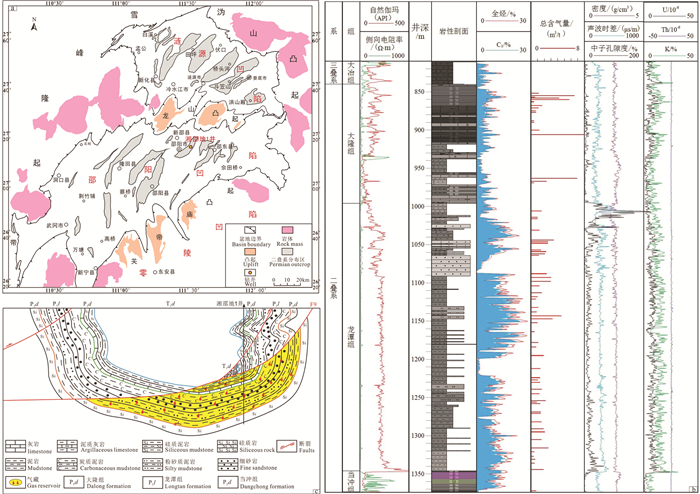
 下载:
下载:
